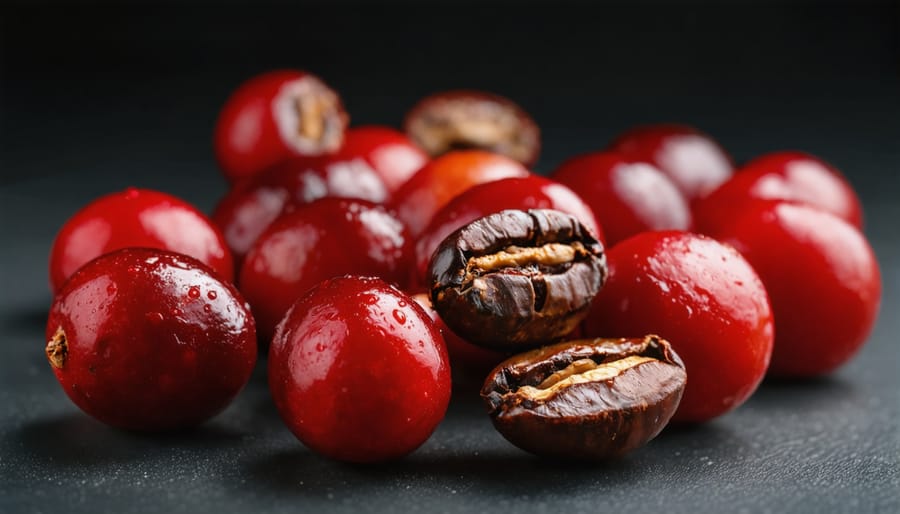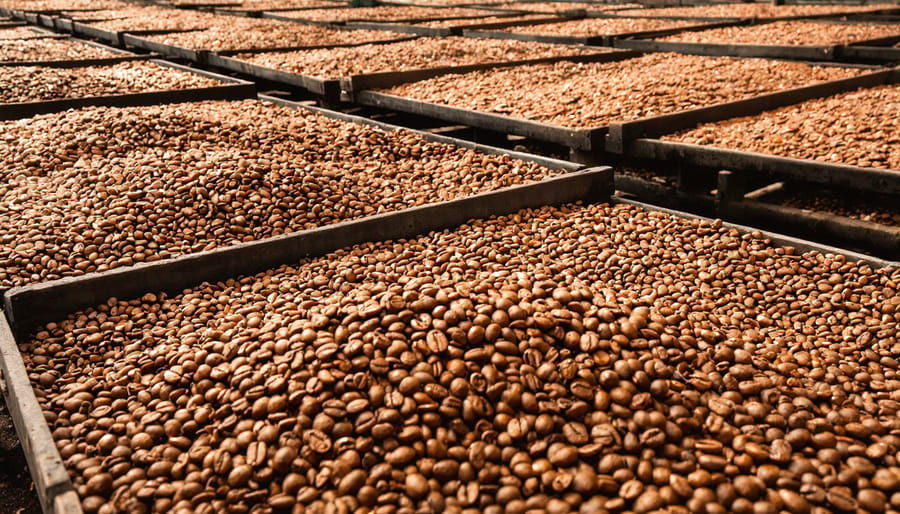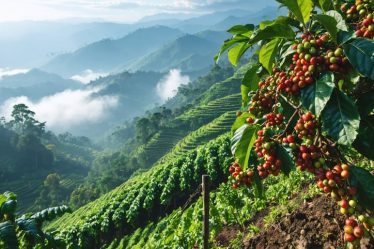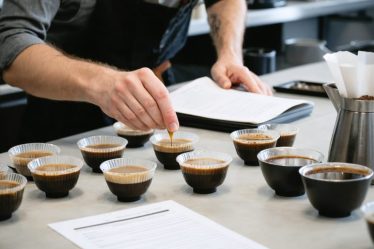
Every sip of your morning coffee tells a story of careful fermentation – a process that’s far more intentional than most coffee lovers realize. Like wine or sourdough bread, coffee undergoes a fascinating transformation through controlled fermentation, shaping coffee’s unique flavor profiles from bright and fruity to rich and complex. Inside those coffee cherries, naturally occurring yeasts and bacteria work their magic, breaking down sugars and developing the distinct characteristics we’ve come to crave in our daily brew. Whether you’re a casual coffee drinker or a dedicated enthusiast, understanding coffee fermentation helps explain why your favorite roast tastes so distinctive – and why some coffees command premium prices at your local café. Let’s explore how this natural process transforms ordinary beans into the aromatic elixir that brightens our mornings.
The Natural Fermentation Process in Coffee
What Happens Inside the Coffee Cherry
When coffee cherries are plucked from their branches, they kick off a fascinating natural process that’s been happening for centuries. Inside each cherry, the coffee beans (which are actually seeds) are surrounded by a sweet, sticky layer called mucilage. As soon as the cherries are picked, nature takes its course – wild yeasts and bacteria in the environment begin breaking down this sugary coating.
Think of it like leaving a piece of fruit on your counter – changes start happening naturally. The microorganisms feast on the cherry’s sugars, creating subtle changes in the environment around the coffee beans. This process begins to alter the chemistry inside the cherry, developing complex flavors that will eventually make their way into your morning cup.
What’s really interesting is that this natural fermentation starts whether we plan for it or not. Even if the cherries are processed immediately after picking, there’s a window of time where these natural changes occur. This is one of coffee’s little secrets – that touch of fermentation is part of what gives different coffees their unique flavor profiles and characteristics.

The Science Behind Coffee Fermentation
You know how sourdough bread gets its distinctive taste from tiny microorganisms working their magic? Coffee goes through a similar process! During fermentation, naturally occurring yeasts and bacteria break down the sugary pulp surrounding coffee beans, creating those complex flavors we love in our morning cup.
Think of it like a little science experiment happening right in the coffee cherry. As these helpful microorganisms feast on the fruit’s natural sugars, they produce acids and other compounds that slowly seep into the beans. This process typically takes anywhere from 12 to 36 hours, depending on the method used and the desired flavor profile.
What’s fascinating is that different fermentation environments create different taste experiences. Just like how I discovered that my homemade kombucha tastes different depending on the temperature of my kitchen, coffee fermentation can be adjusted to produce various flavor notes – from bright and fruity to rich and wine-like.
The best part? This natural process not only develops those delicious flavors but also helps separate the bean from the fruit, making it easier to process while reducing water usage. It’s nature’s way of making our coffee both tastier and more sustainable!
How Fermentation Methods Affect Your Coffee’s Taste
Wet Process: Creating Bright and Clean Flavors
Picture walking into your favorite café on a bright morning and ordering that crisp, citrusy coffee that instantly perks up your day. That clean, vibrant taste you’re enjoying? It’s likely thanks to wet processing, a method that’s become increasingly popular in modern coffee production.
When coffee cherries arrive at the processing station, they’re immediately submerged in water tanks where natural fermentation begins. But unlike the wild fermentation in natural processing, wet processing is more controlled – think of it as the difference between making sourdough bread versus a quick bread with instant yeast.
The fruit flesh is removed from the beans before fermentation really gets going, which typically lasts between 12-24 hours. This shorter fermentation time creates those bright, clean flavors that many of us have come to love in our morning cup. You might recognize these coffees by their crisp acidity and lighter body – perfect for those who enjoy detecting subtle flavor notes like citrus, berries, or florals.
I discovered wet-processed coffees during my first trip to a specialty coffee shop, and they completely changed my perception of what coffee could taste like. If you’ve ever had a coffee from regions like Colombia or Kenya that reminded you of fresh oranges or sweet honey, you’ve probably experienced the magic of wet processing.

Dry Process: Developing Rich, Fruity Notes
Picture sun-drenched coffee cherries laid out on patios under the warm Brazilian sun – that’s the essence of dry processing, one of coffee’s most traditional fermentation methods. This natural process, which I first witnessed during my visit to a family-owned farm in Ethiopia, creates some of the most distinctively flavored coffees you’ll ever taste.
In dry processing, freshly picked coffee cherries are spread out on large drying beds or patios, where they’re regularly turned to ensure even drying. As the fruit dries around the bean, natural fermentation occurs, infusing the coffee with delightful berry-like sweetness and complex origin-specific taste characteristics.
Think of it like making sun-dried tomatoes – the slow drying concentrates the fruit’s natural sugars and flavors. During this process, which can take up to four weeks, the coffee develops signature notes of blueberry, strawberry, or tropical fruits, depending on the region and climate. It’s why your morning cup of naturally processed Ethiopian Yirgacheffe might taste like it’s bursting with wild berries!
While this method requires more patience and careful monitoring than other processing techniques, the result is a fuller-bodied coffee with a syrupy sweetness that many coffee lovers (myself included!) absolutely adore. If you’ve ever enjoyed a coffee that reminded you of fruit punch or wine-like complexity, chances are it was dry processed.

Choosing Coffee Based on Fermentation Style
Flavor Profiles to Look For
When I first started exploring specialty coffee, those flavor notes on coffee bags seemed like a foreign language! Now, I love playing detective with coffee flavors, and fermentation adds some fascinating notes to look out for. If you’re curious about fermented coffee profiles, here are some key descriptors to spot on your next bag:
Fruity and wine-like notes often signal fermentation, particularly descriptors like “berry,” “grape,” or “stone fruit.” Look for words like “bright,” “complex,” or “vibrant” – these usually hint at controlled fermentation during processing. Some coffees might even remind you of kombucha with their slight tanginess!
Natural or dry-processed coffees typically showcase more fermented flavors, often described as “funky,” “boozy,” or “tropical.” Ethiopian and Kenyan coffees are especially known for these exciting flavor profiles. For milder fermented notes, look for “honey-processed” coffees, which offer subtle sweetness with gentle fermented undertones.
Don’t be surprised to find descriptions like “experimental processing” or “anaerobic fermentation” on specialty bags – these are exciting indicators that your coffee has undergone carefully controlled fermentation to develop unique flavor characteristics. Remember, these flavors are completely safe and can add wonderful complexity to your morning cup!
Buying Tips for Your Taste Preferences
Ready to elevate your coffee game? Let me share some insider tips on choosing the perfect beans based on their fermentation process. If you love bright, fruity notes with a wine-like complexity, look for naturally processed coffees from Ethiopia or Yemen. These beans typically undergo longer fermentation periods, creating those gorgeous berry and citrus flavors we can’t resist!
For those who prefer classic, clean coffee flavors with subtle chocolate or nutty undertones, washed process coffees are your best friend. These beans, often from Colombia or Guatemala, have a shorter fermentation period, resulting in that familiar, comforting taste we associate with our morning brew.
Want to experiment? Try honey-processed coffees from Costa Rica – they’re the perfect middle ground, offering a delightful balance of sweetness and clarity. Once you’ve chosen your beans, remember that different brewing techniques can enhance these unique flavor profiles even further.
Pro tip: Start with small batches from different processing methods and keep notes about what you love. Your perfect cup might be different from mine, and that’s what makes coffee so wonderfully personal!
As we’ve discovered, coffee’s journey from bean to cup is truly fascinating, with fermentation playing a crucial role in creating those delightful flavors we’ve come to love. Whether you’re sipping a naturally processed Ethiopian coffee with its wine-like notes or enjoying a washed Colombian brew with bright, clean flavors, you’re experiencing the amazing results of fermentation.
I encourage you to step out of your comfort zone and explore different coffee varieties – each tells its own unique fermentation story through its taste. Next time you visit your local coffee shop, try asking about their naturally processed coffees, or experiment with beans from different regions to discover how various fermentation methods affect the final cup.
Remember, there’s no right or wrong way to enjoy your coffee. Some of us might prefer the bold, fruity notes of extended fermentation, while others might enjoy the classic, clean taste of traditionally processed beans. The beauty of understanding coffee fermentation is that it opens up a whole new world of appreciation for your daily brew.
So go ahead, embrace your coffee curiosity, and let your taste buds guide you through this delicious journey of discovery!



